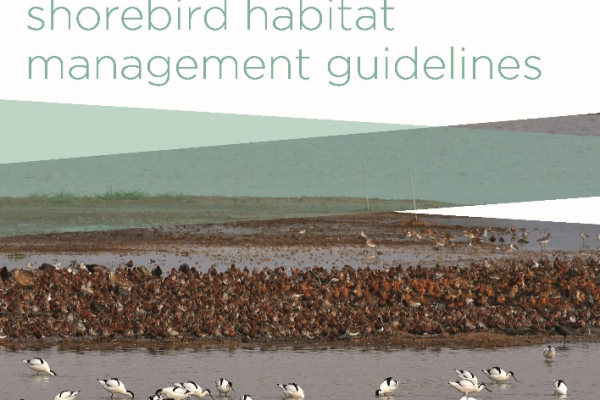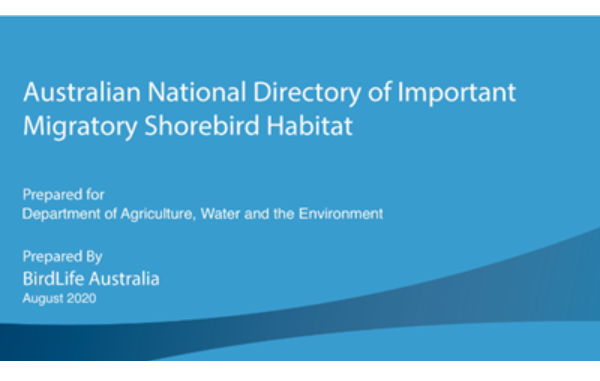-
Coastal high-tide shorebird habitat management guidelines
In recent years there is increasing recognition of the critical importance of intertidal wetlands to conserving biodiversity, including shorebird populations. However, the necessity of roosting sites, especially during high…
Continue reading -
“Flyway: connecting people and migratory waterbirds” story series #13 – Ms. Miyoung Choi
“I think the best conservation action is not to destruct anything in the first place.” -- Ms. Miyoung Choi. Photo of Ms. Miyoung Choi © Miyoung Choi Ms. Miyoung Choi, a former Finance Officer of EAAFP Secretariat, and a person who loves birds. Serving public services at Environment category of Incheon Metropolitan City, she is eager to enhance the habitats of migratory waterbirds and raise awareness among citizens about their protection. # Journey of Ms. Miyoung Choi EAAFP : Nice to meet you, Ms. Miyoung Choi. Could you please introduce yourself? I am now a government officer at Incheon Metropolitan City working on waste management. EAAFP : You worked as a Finance Officer at EAAFP Secretariat for about 3 years, and you are now a donor to EAAFP Foundation. We truly appreciate your support. What does the EAAFP mean to you? I worked in the EAAFP Secretariat as a finance officer from November 2013 to June 2017 under the staff secondment agreement with the Incheon City (Host City of EAAFP Secretariat). City-based work as a public officer and partnership-based work within the Flyway Partnership were very different. I had to work in a different perspective, which led me to understand the hard-working of lots of people across the world. I also realized that conservation has no boundaries, and became humble as getting to understand the mother nature, and foremost it gave me a good chance to watch birds. Photo of Ms. Miyoung Choi © Miyoung Choi # Beautiful Memories with Birds EAAFP : You seem to have a lot of interest in conservation of various kinds of birds. What led you to get interested in birds? Since working at EAAFP, I realized that a lot of people are working on various things related to birds. I had no involvement in this type of work that directly related to birds, but I soon noticed that there are people who strive to protect birds in Incheon area. EAAFP is an organization which works with them. Since I was able to work in a cooperative relationship, I found what I could help as a public officer and also I had to speak for the them. We were able to complement each other. Through this mechanism, I think I learned a lot about birds and conservation. Our then Chief Executive tried efforts to help me learn, and provided many opportunities to engage in various activities. EAAFP : What is your favorite birds and why? I like new birds. Their colors, appearance, size, sound, and habitats are all different and various kinds of birds are living by their own lifestyle. When I look at the new bird, it is enjoyable to see how they live, and interesting to learn about it. Birds that travel far without boundaries might seem too free with great dangers around, but I envy their ability to find their own way without being afraid of adventure. I still do not know much about birds and I am still learning about them. EAAFP : We heard that since you left EAAFP you have worked in conservation of migratory waterbirds as a public officer at Incheon Metropolitan City. Could you tell us more about your assignment in that regard? Since I am on public service of Environment category, I worked on development and management of bird habitats utilizing my work experience in EAAFP. Songdo in Incheon City is a reclaimed area of large-scaled tidal flats. A great deal of habitats of migratory birds were damaged due to the loss of the tidal flats. Alternative habitats were built to compensate the loss. I thought hard how to restore the damaged habitat in consultation with experts in conservation, not to make the process a typical justification for the development of Songdo. Through a systematic monitoring and a lot of meetings with local as well as international experts, I got to realize that the initial plan (of alternative habitat) might be inappropriate. Rather than building breeding sites that go through many process which may result in damaging tidal flats, we decided to compensate the loss of resting areas through the formation of wetland in part of the reclaimed land. But I think the best conservation action is not to destruct anything in the first place. Photo of Ms. Miyoung Choi © Miyoung Choi # Message Toward the World EAAFP : What would be the biggest barrier to conserving migratory waterbirds? Since the habitat of migratory waterbirds are not valuated as a natural state such as tidal flats or other wetlands, they are vulnerable to development action at low cost. Raising awareness among local community and government to protect their habitats is important, and the Flyway and key sites of migratory waterbirds have to be monitored and further designated as a protected area in order to protect them from indiscriminate development. EAAFP : What are the things the public can do to protect migratory waterbirds? If many people are interested in migratory waterbirds and habitat and at least notice the existence of birds in their neighborhood, the government's policy will change a lot. In addition, individual behavior has to be changed to protect them. I have seen some people’s irresponsible actions during their leisure activities. You can participate in conservation activities prepared for the public and show it to the government. A few years ago, I visited a habitat of Taizang in Taiwan, and I was deeply inspired to see many people with diverse jobs actively participate in monitoring and conservation activities and contribute to make conservation programs and policies together with the government.
Continue reading -
Australia published National Directory of Important Migratory Shorebird Habitat
A National Directory of Important Migratory Shorebird Habitat ('Directory') was newly published by BirdLife Australia and supported by the Australian Government. The Directory identifies, and guides investment into the protection and restoration of, important migratory shorebird habitat around Australia. It builds community awareness and Indigenous knowledge, helps achieve the goals of the Australian Government’s Wildlife Conservation Plan for Migratory Shorebirds and contributes to the implementation of Australia’s international obligations to the conservation and management of migratory shorebirds. It is based on thousands of field surveys by volunteers and experts, millions of bird sightings and uses rigorous methodology to identify key sites, thus providing useful and objective guidance. Habitat is key: Populations of many species of migratory shorebirds have undergone substantial decline over recent and extended periods of time. As an example, numbers of Far Eastern Curlew (Numenius madagascariensis) have declined by more than 80% over the course of by now four decades. Halting this decline and reversing the current trend is without alternative if threatened species are to avoid extinction and continue to contribute as an integral component of Australia nation’s biodiversity to the functioning of Australia’s ecosystems. Actions and processes threatening migratory shorebird habitat have to be effectively recognized and mitigated. In order to achieve this, decision-makers and stakeholders around Australia need to be able to easily access information on the importance of sites for migratory shorebirds. The directory provides this crucial link which was not previously been available. The Directory also provides a starting point for a more comprehensive assessment of the current state of the habitat listed, a prioritization of sites according to current or future threats experienced and more targeted conservation action. This directly addresses and supports some of the priority actions in the Australian Government’s Wildlife Conservation Plan for Migratory Shorebirds across the main objectives: protection of important habitat, anthropogenic threat minimization or elimination and knowledge gap identification. A number of high priority projects are already in the process of being implemented, the Directory makes those more effective and targeted. The Directory is an important step towards effective migratory shorebird habitat protection around Australia. Revision of conservation and management plans for many sites may be necessary to reflect their importance. Specific site action plans detailing conservation measures to be taken for migratory shorebirds at a single site can be developed as a follow-up action. The directory thus also represents a key resource underpinning further conservation measures under Australia’s Conservation Action Plan for Migratory Shorebirds and other frameworks. The Australian Government, which provided gratefully acknowledged funding for this scientific project delivered by BirdLife Australia, has approved of the Directory after consultations with its Committees and all Australian States and Territories. The document has been officially launched on 21 April 2021. It is available for download in *.pdf format in its latest version: National Directory of Important Migratory Shorebird Habitat Download the complete Directory (one file or, due to file size, chapters separately) from the download folder. It is advised to always read the Introduction and Discussion alongside the chapter you need. Overview of chapters: Introduction and Methods Chapter 1 - External Territories Chapter 2 - New South Wales and Australian Capital Territory Chapter 3 - Northern Territory Chapter 4 - Queensland Chapter 5 - South Australia Chapter 6 - Tasmania Chapter 7 - Victoria Chapter 8 - Western Australia Chapter 9 - Species accounts (listing of sites by species, not by site) Discussion and Appendices Due to the large size of the document (1287 pages printed), there are no printed copies are available – please arrange for own printing and binding if desired. If you have feedback on the Directory process or the Directory itself, or you have additional data to contribute to a potential future revision, please write to directory.feedback@birdlife.org.au If you have other questions regarding the Directory, please contact shorebirds@birdlife.org.au For data extractions from BirdLife Australia’s shorebird data holdings, see the Data Extractions section. Repost from BirdLife Australia news article: https://birdlife.org.au/projects/shorebirds/national-directory-ms-habitat (Released on: 21st April, 2021) Know more about Flyway Network Sites in Australia: www.eaaflyway.net/australia/
Continue reading




